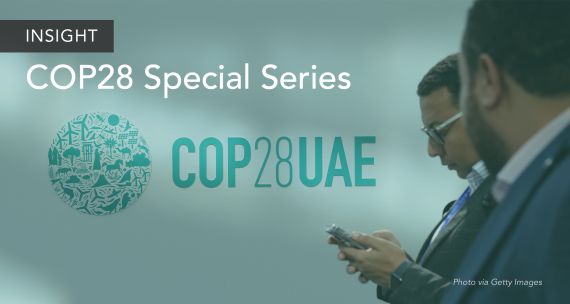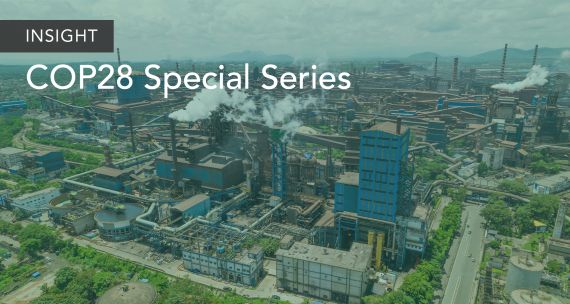The Takeaway
The role of technology, especially artificial intelligence (AI), featured prominently at the 28th Conference of the Parties (COP28) to the UN Framework Convention on Climate Change (UNFCCC) in December 2023. While climate technologies are increasingly touted as tools to mitigate and adapt to the climate crisis, some experts urge caution, noting many of these technologies — including AI — consume significant amounts of energy, leaving them only somewhat effective. Another worry is the potential for these technologies to widen inequity between developed and developing countries, not least of all in the Indo-Pacific.
In Brief
- The UNFCCC Technology Mechanism was established in 2010 to facilitate the development and transfer of climate-related technologies from developed to developing countries. There was high-level focus at COP28 on enhancing these international climate-technology partnerships. Developing nations emphasized this point, highlighting that the disparity between them and developed countries in acquiring and using climate technologies continues to widen.
- COP28 marked a shift in the use of climate AI with the launch of Artificial Intelligence for Climate Action (AI4ClimateAction). By creating a platform that allows for open discussions of new technologies, the initiative aims to build developing countries’ capacity to access and effectively utilize AI for climate action. An example includes the Global Renewables Watch, which uses AI to optimize energy grids and monitor the clean energy transition over time.
- AI can help countries upgrade the weather forecasting systems that support their use of renewables such as wind and solar, thereby improving the efficiency of these systems. AI can also be used to develop climate models that improve overall predictions and disaster-risk management. This is critical as managing disasters is becoming more challenging and expensive; extreme weather events have cost governments about C$193 billion annually from 2000-19. In developing countries, 189 million people are affected each year by these extreme weather events, underscoring the urgent need to better predict, monitor, and implement disaster-risk reduction strategies.
Implications
Technological gaps and under-investment may exacerbate inequity. Referred to as the “digital divide,” developing countries vulnerable to the effects of climate change have struggled to acquire green frontier technologies such as green hydrogen due to barriers like insufficient capital, a lack of technological skills, and inadequate local infrastructure. According to a 2023 United Nations Conference on Trade and Development report, this gap is especially prominent in clean and low-emission technologies, where there is a C$2.7-trillion gap in energy transition investments. When ranking countries on their preparedness to take advantage of green technologies, regional discrepancies are prevalent: high-income Asian nations such as Singapore, South Korea, and Japan ranked third, sixth, and 19th, respectively, whereas lower-income states Cambodia and Bangladesh ranked 112th and 134th.
The emissions generated by AI-driven climate technologies are largely overlooked. An increasing number of studies show that AI has an enormous carbon footprint. For instance, one study of deep learning showed that training a single AI model can emit the equivalent of around 626,00 pounds of carbon dioxide, nearly five times the emissions of an average American automobile throughout its lifetime. Additionally, AI models usually require multiple rounds of reprogramming, so total emissions could, in fact, be much higher. The sheer amount of energy used in AI operations, coupled with the extensive quantity of fresh water used in cooling data centres, raises questions about AI’s overall viability as a solution to the climate crisis.
What’s Next
1. Integrating digitalization and sustainability in regional trade
Several Southeast Asian states are taking a greater interest in establishing a regional digital green economy. The Association of Southeast Asian Nations (ASEAN) has created multiple digital agreements. These include the ASEAN E-commerce Agreement and the ASEAN Digital Masterplan 2025. However, gaps remain in fusing regional digitalization with a clear decarbonization strategy. But there are examples of such integration that ASEAN could consider, including the 2022 Green Economy Agreement (GEA) struck between Singapore and Australia. The GEA is the first international trade agreement that seeks to address economic, environmental, and trade objectives concurrently. Its objectives include the decarbonization of the shipping industry, the promotion of sustainable financing, and business collaboration around green innovation.
2. Digitalization partnerships within Asia
The Green Digital Economy Platform, established in 2023, is an initiative connecting 62 million Indonesian farmers with South Korean-led digital technologies such as meta-farming and carbon trading. Led by HumanX, a global “human-centered” technologies partnership, in collaboration with Indonesia-based grassroots organization Maju Tani Movement and the Singapore-based DQ Institute, the platform seeks to establish a green and digital economy through technology and innovation. It is set to launch in North Kalimantan, Indonesia, where participating farmers will be equipped with digital skills and provided access to digital agri-technology, such as remote farming.
• Produced by APF Canada’s Southeast Asia team: Hema Nadarajah, Program Manager; Sasha Lee, Analyst; and Alberto Iskandar, Analyst. Editor: Ted Fraser. Graphic Design: Chloe Fenemore







